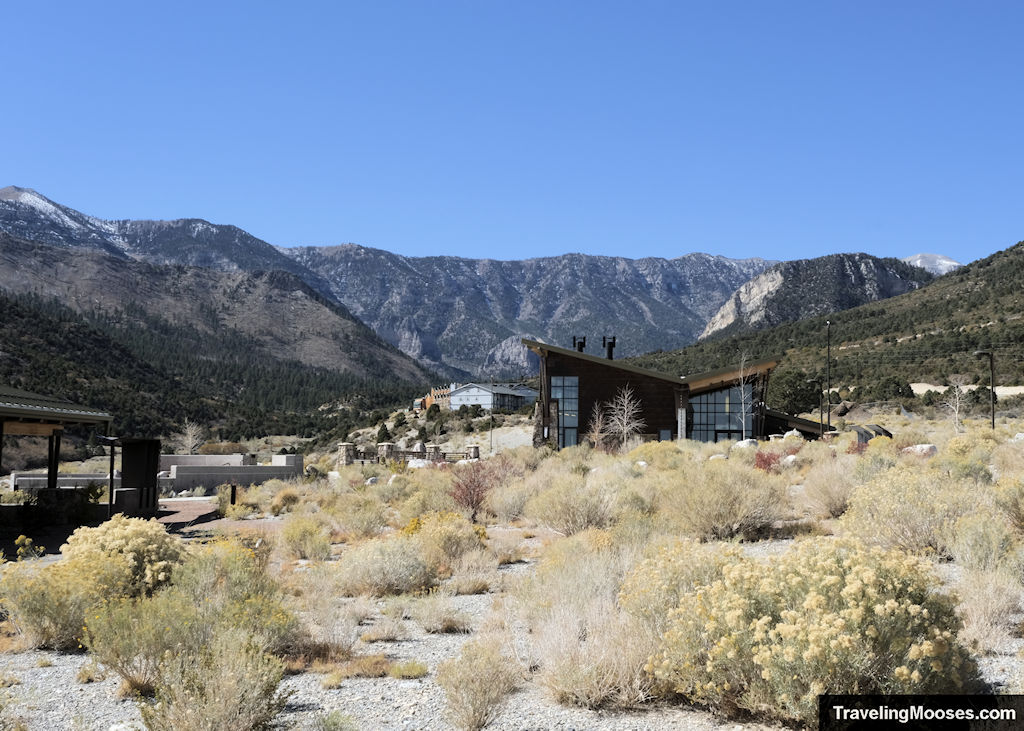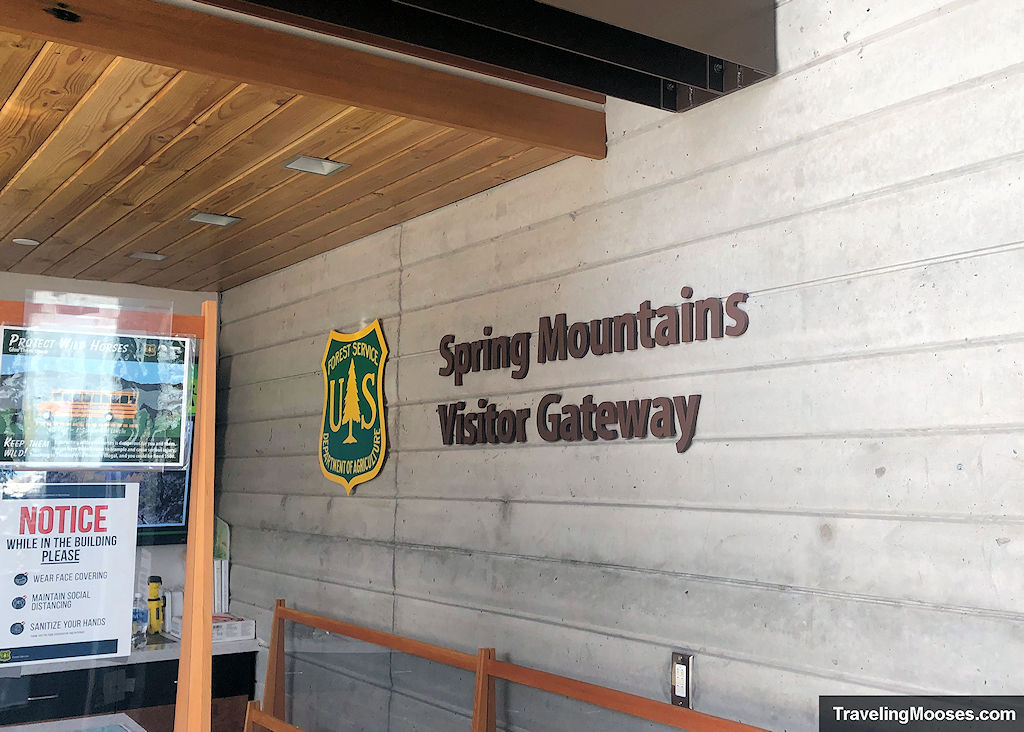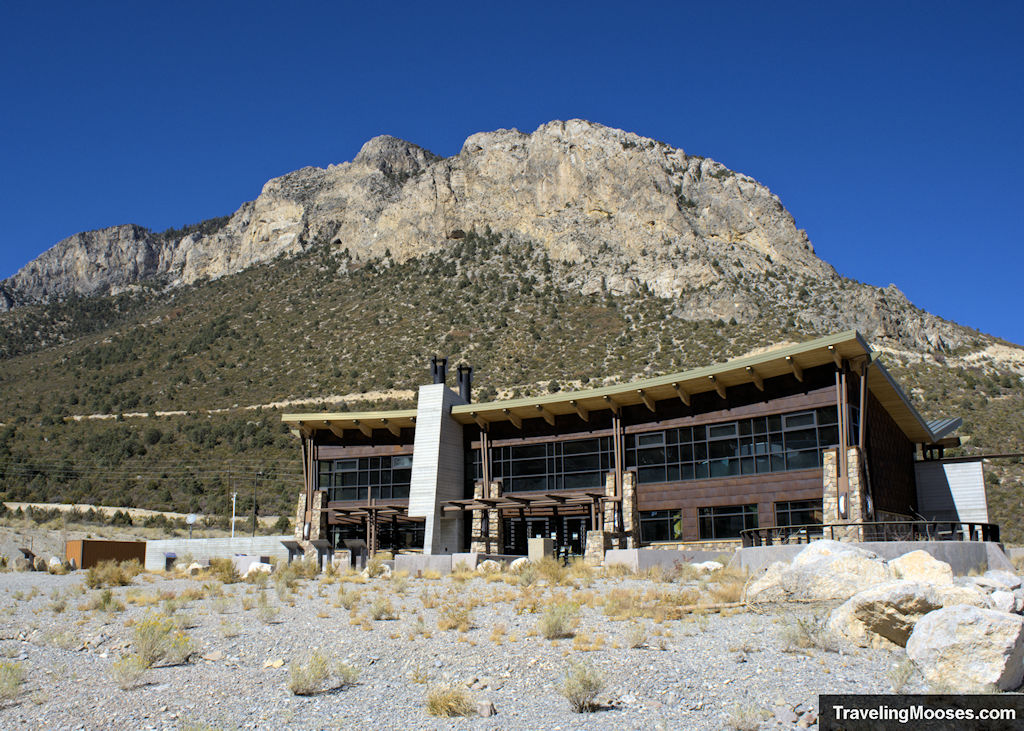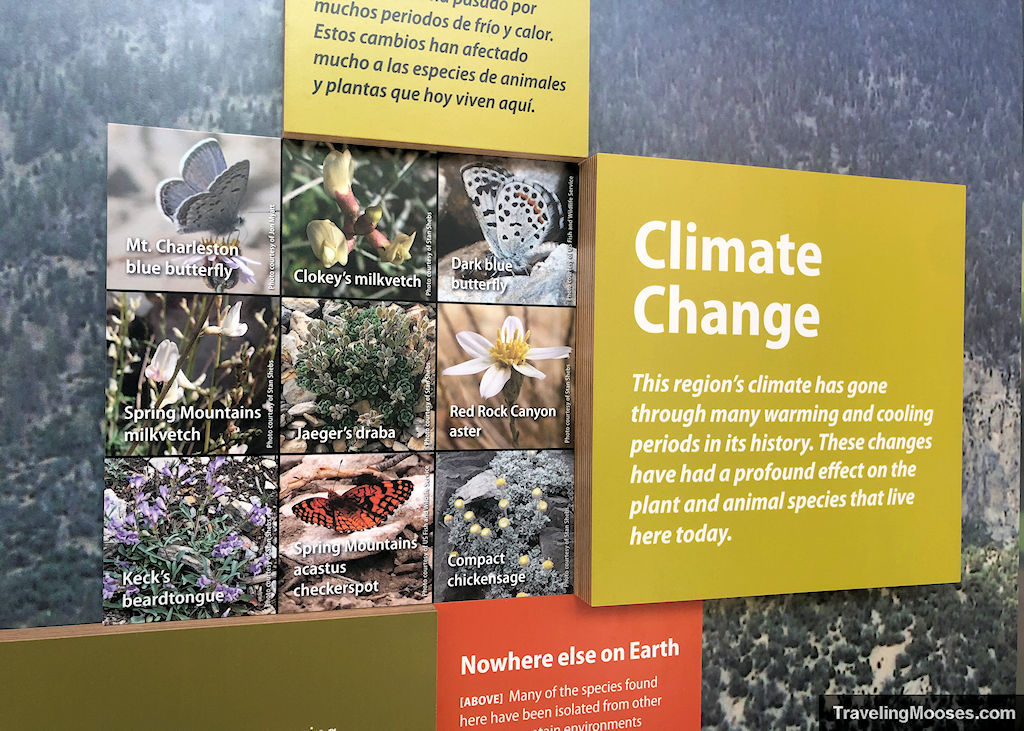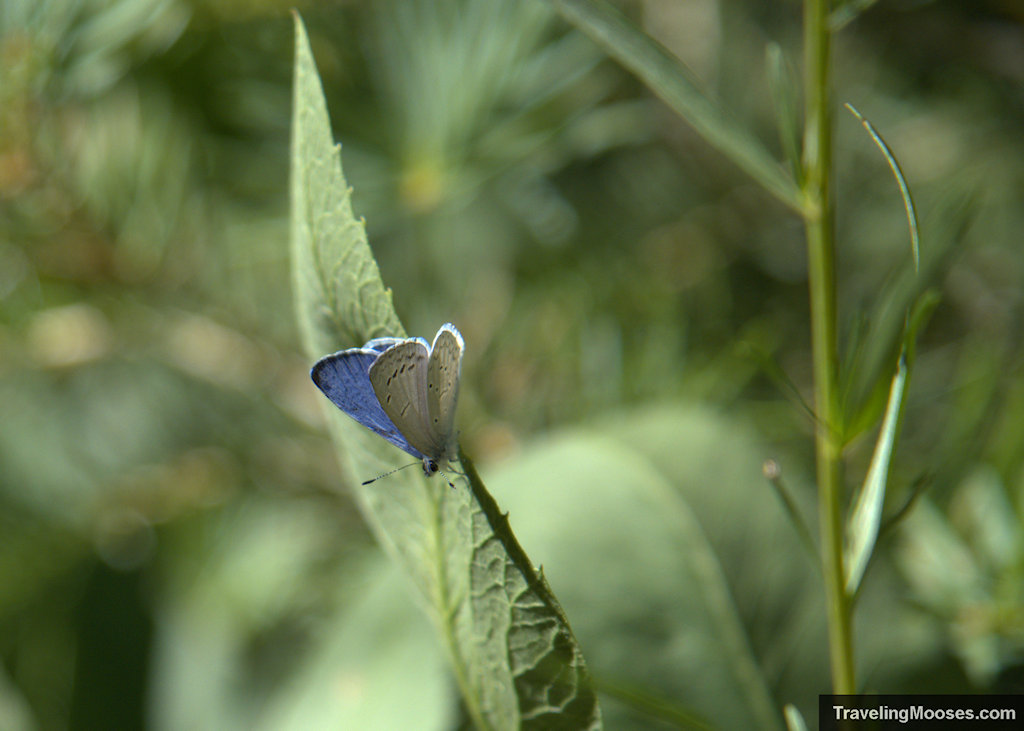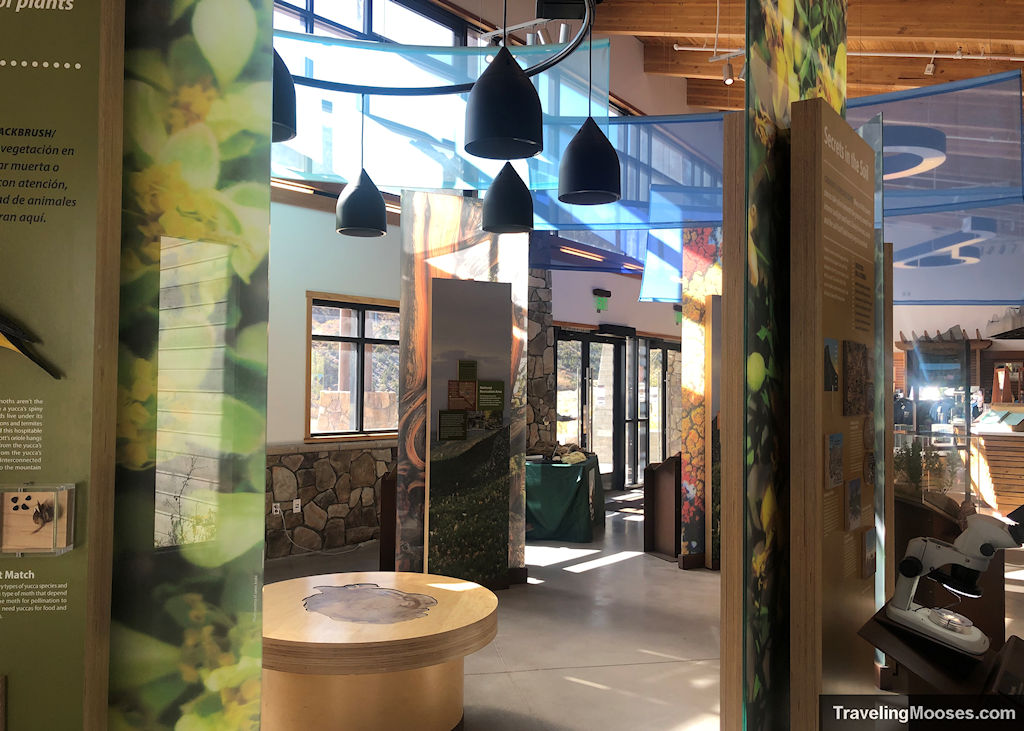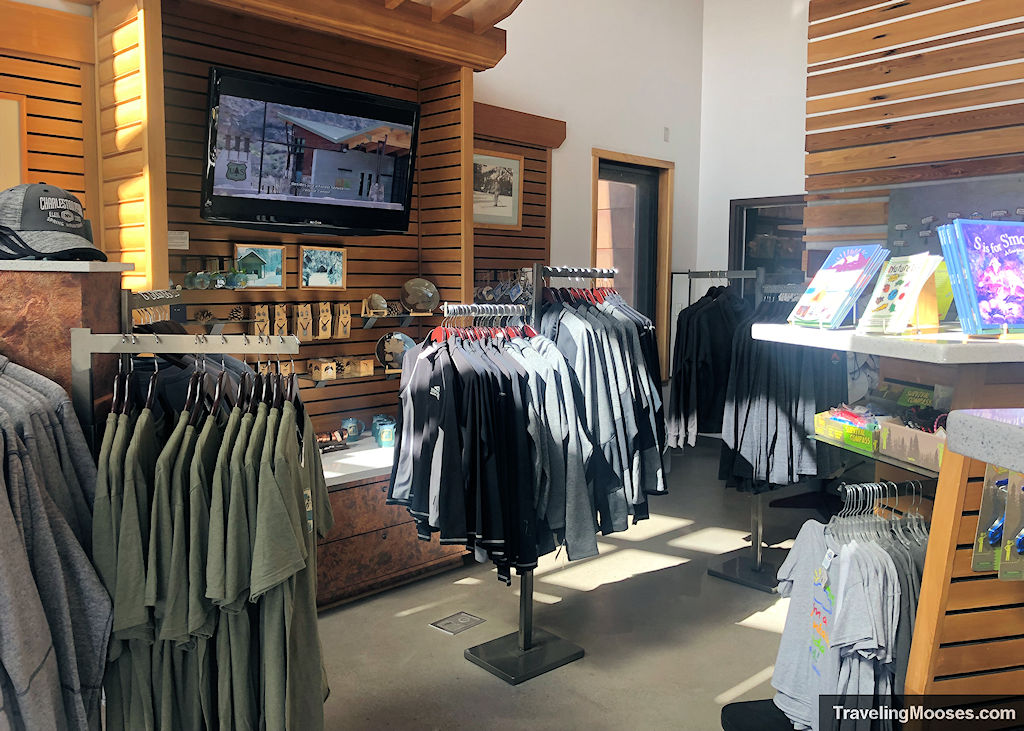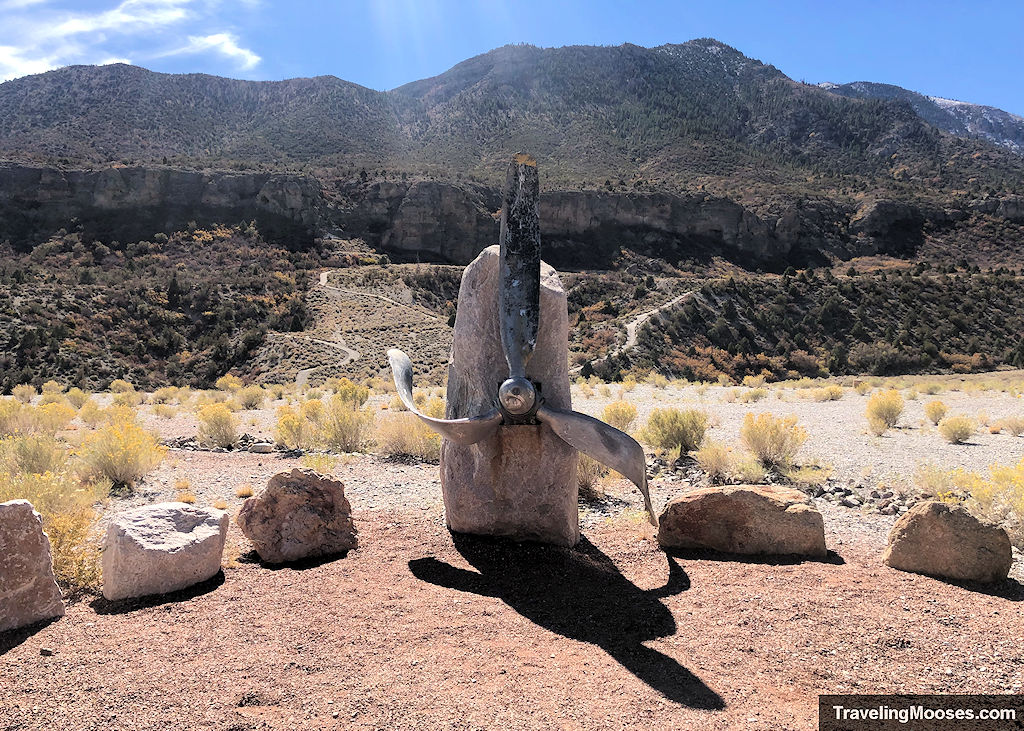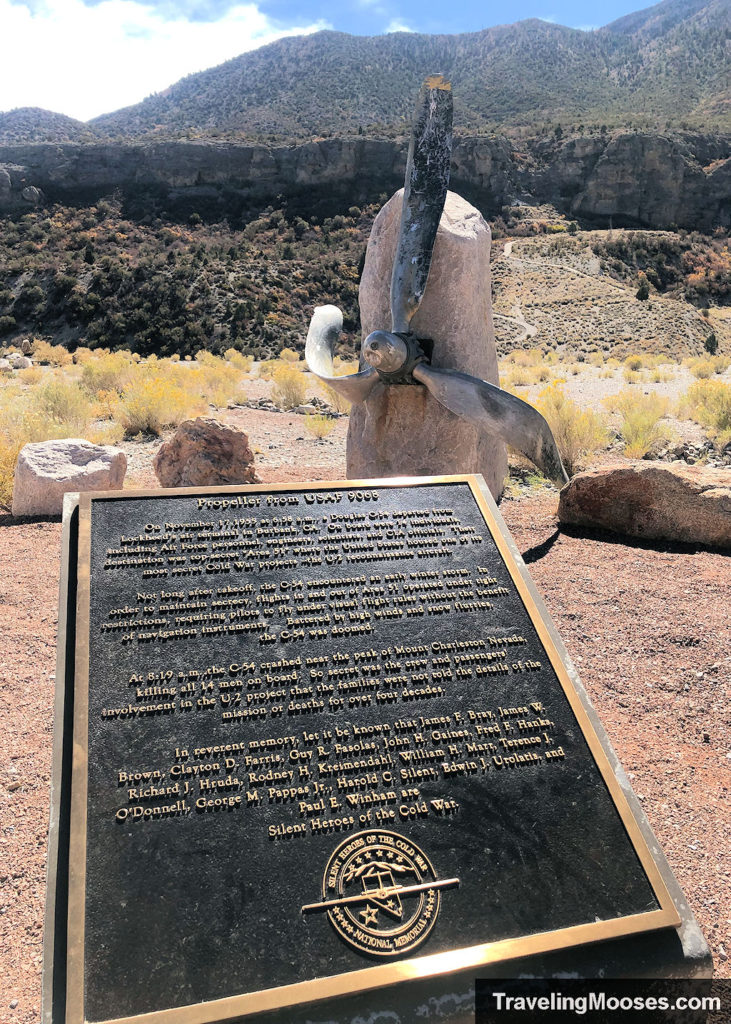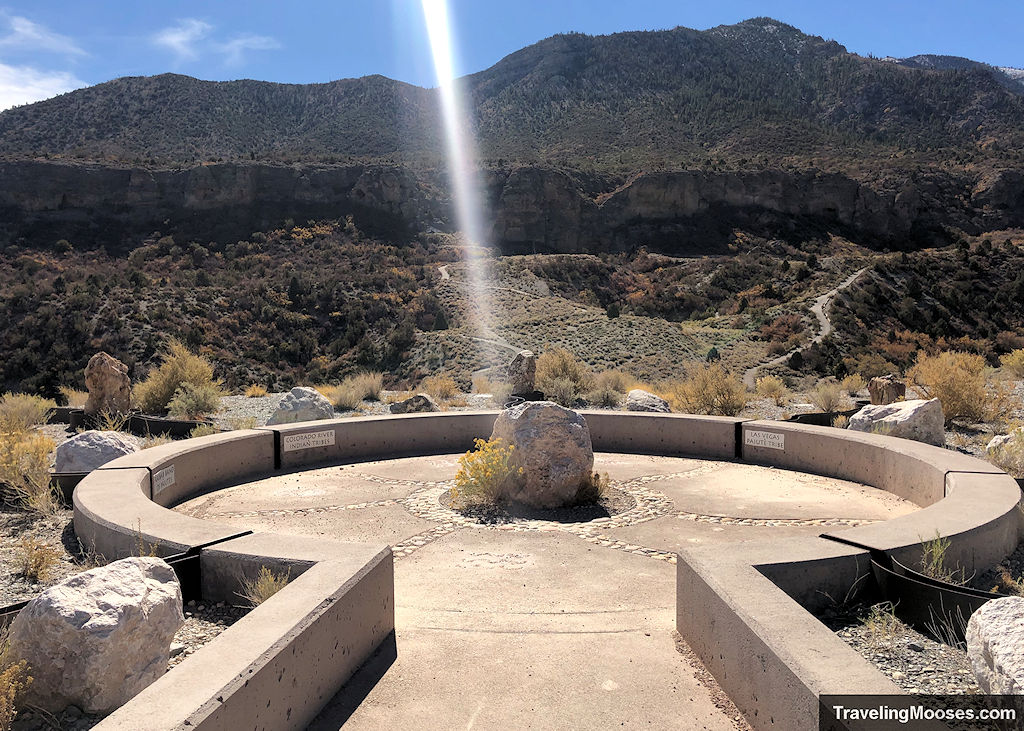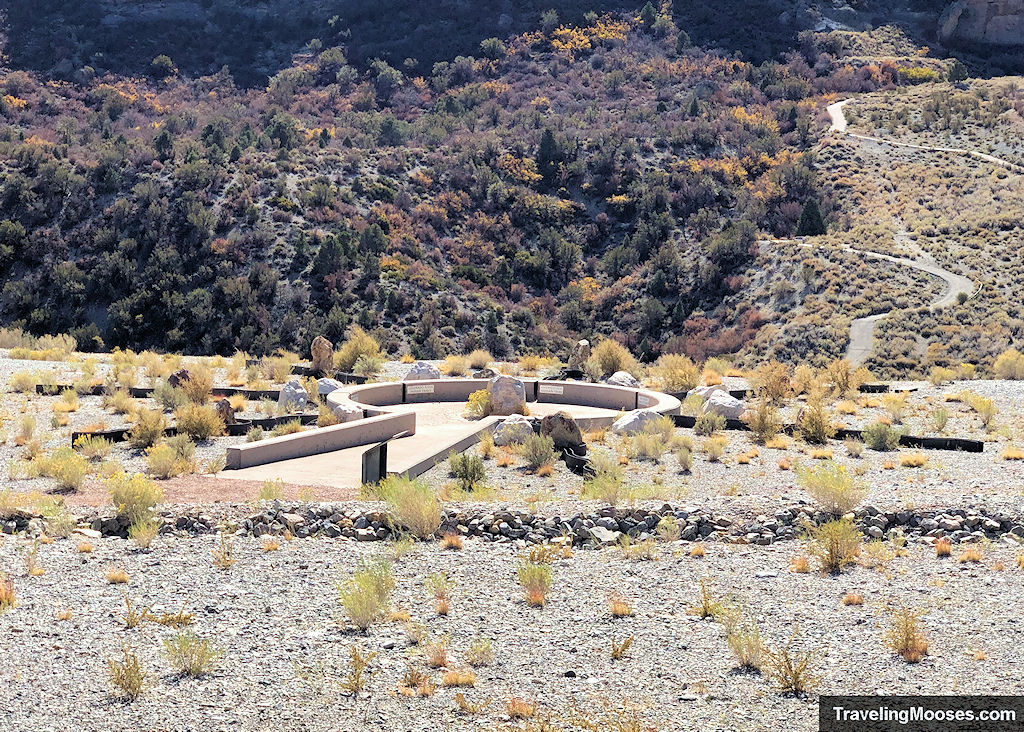The Mt. Charleston Visitor Center (aka Springs Mountains Visitor Gateway) is the doorway to the famed Spring Mountains National Recreation Area and the 11,916’ tall Mt. Charleston.
It boasts a gift shop, education building, outdoor amphitheater and several hiking trails at the base of the Spring Mountains. Learn about the area, plan your visit, and enjoy the expansive views the center has to offer before exploring the rest of the Spring Mountains area.
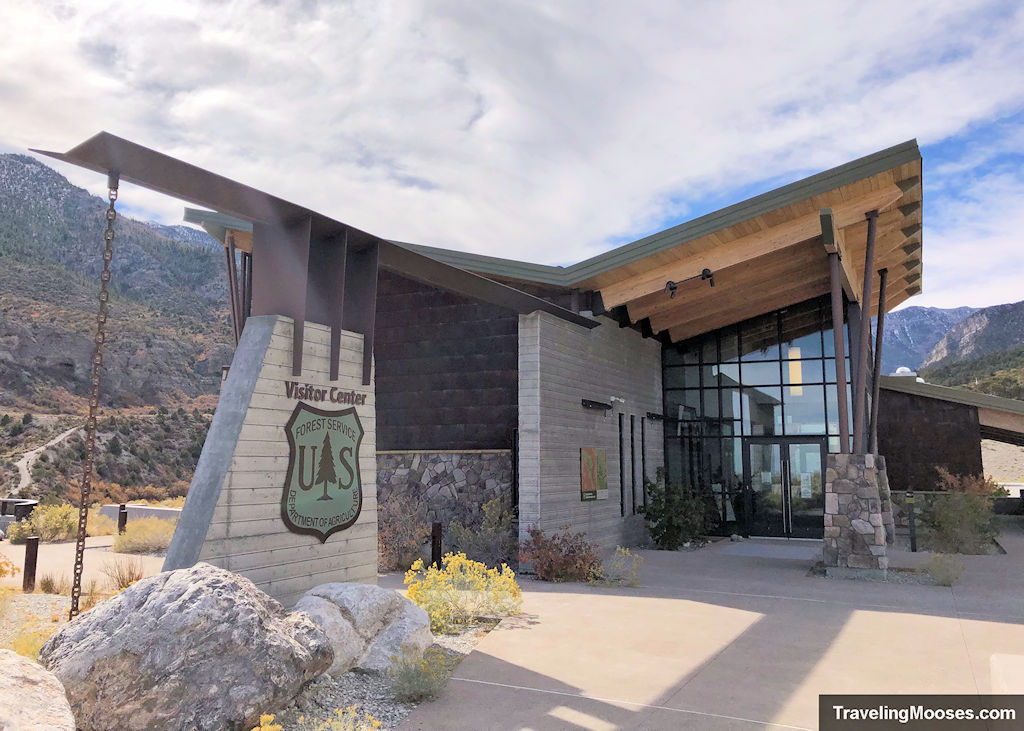
Spring Mountains Visitor Gateway Fast Facts
| Hours of Operation | Friday, Saturday, Sunday – 9 a.m. – 4 p.m. |
| Address | 2525 Kyle Canyon Road, Mt Charleston, 89124 |
| Admission | Free |
| Parking | Abundant Free Parking |
| Average Visit Time | < 1 Hour unless adding a hike |
| Current info/Closures | Go Mt Charleston |
| Rating | 3.0 Mooses |
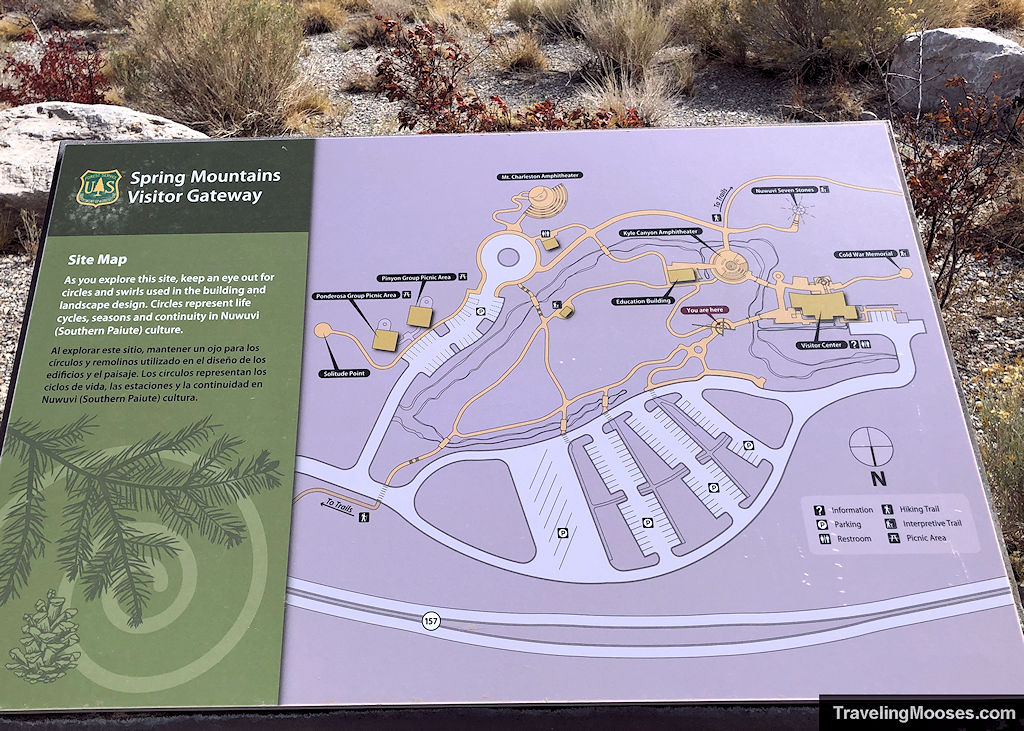
Things to do at the Spring Mountains Visitor Gateway
- Experience informational exhibits both indoors and outdoors
- Visit the gift shop for a local keepsake
- Visit the information desk to help plan your visit to the park
- Take a short hike around the area on the Acastus, Kunav Huveap, Packrat or Escarpment trails
- Attend a special event at the outdoor amphitheater
- Attend an education experience at the onsite education building
- Learn about the Silent Heroes of the Cold War Memorial
- Celebrate the Seven Stones Plaza in honor of the Nuwuvi
- Enjoy a picnic at the Pinion & Ponderosa Group Picnic Area
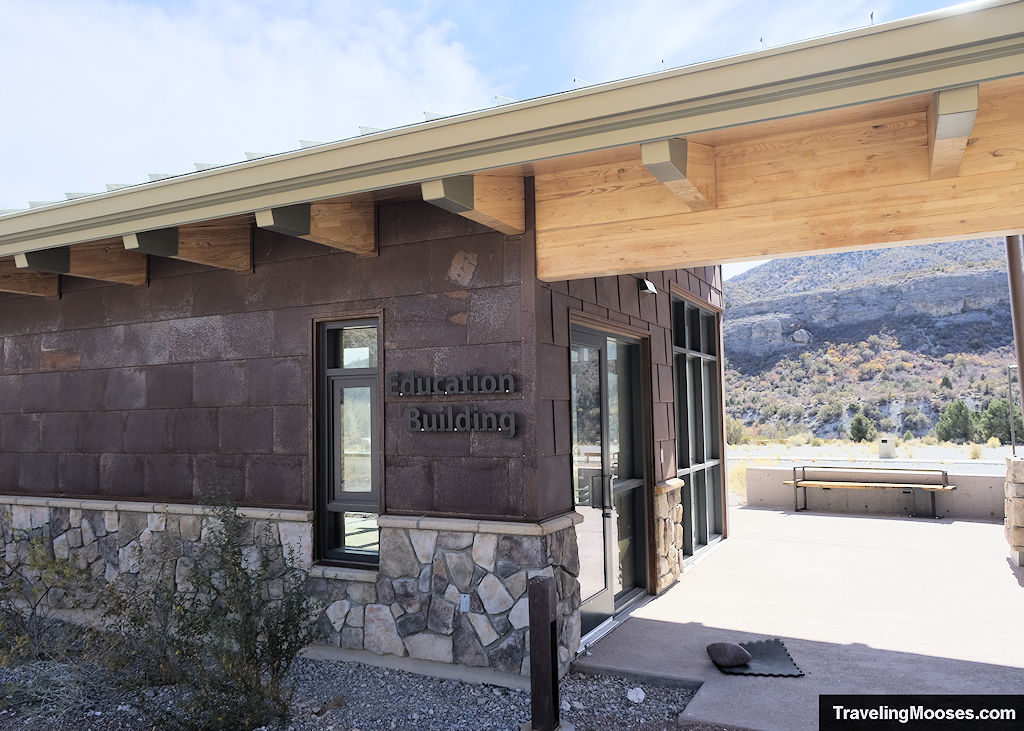
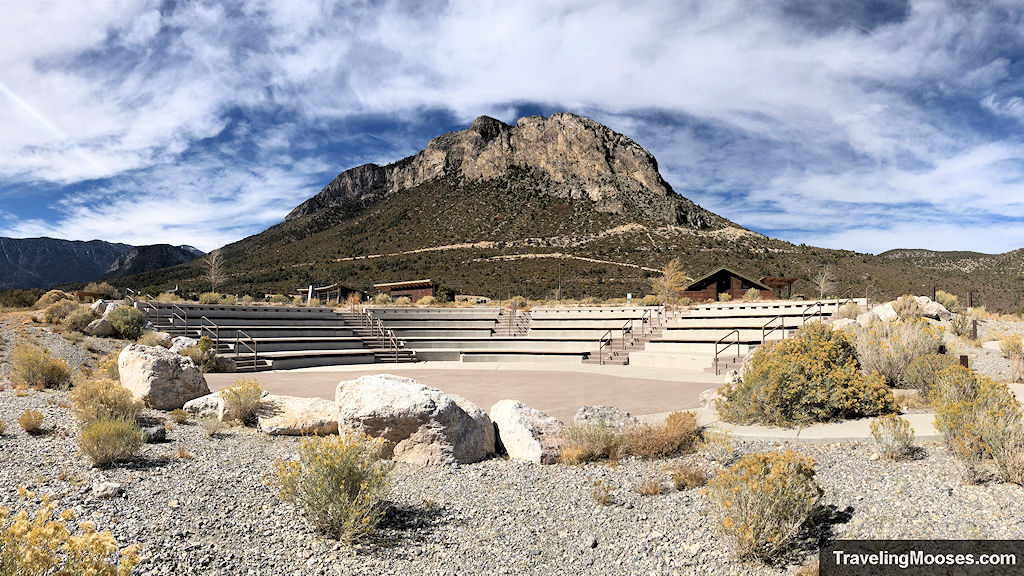
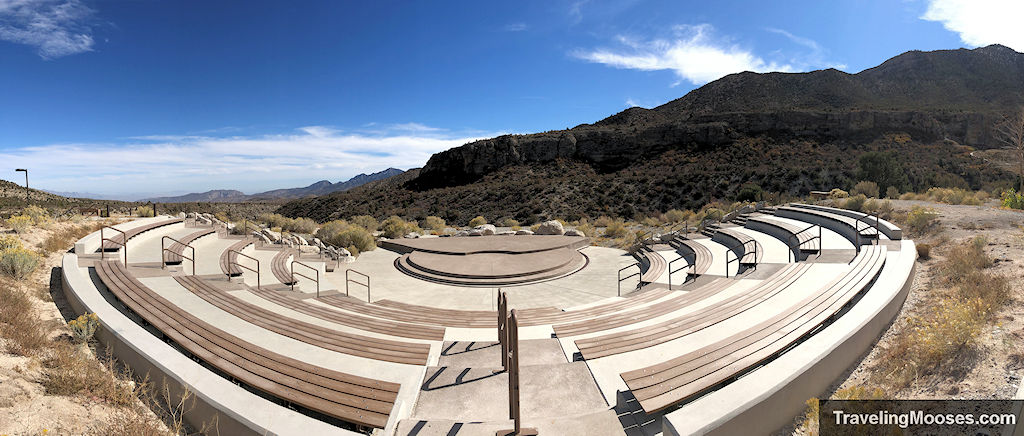
Our experience at the Mt. Charleston Visitor Center
After getting some misleading information online on when exactly the visitor center is open, we were able to visit on our second attempt at seeing the facility.
Insider tip – be sure to check the “weekly update” on the Go Mt. Charleston website for current information.
We arrived on a Friday around 10 a.m. to find an overly large parking lot that was 98% empty. It was pretty windy, but the sun was out and we were excited to check out the visitor center.
We started with the inside of the venue and found a number of exhibits inside the building that spoke about the local wildlife in the area including the famed Mt. Charleston blue butterfly.
Many of the species found here have been isolated from other similar mountain environments for eons. These plant and animal populations are now completely unique and can only be found here at the Spring Mountains. This is called endemism.
Spring Mountain Visitor Gateway Exhibit
If you’re lucky when you visit the area during the right time of year, you might spy one of the blue butterflies. They have a short life span (1 – 2 weeks), and can been seen as early as mid-June and as late as mid-September.
Related: We finally got to see one of the butterflies along the Fletcher Canyon Trail!
After checking out the exhibits (there weren’t many), we wandered over to the gift shop to check out the offerings. They had a variety of t-shirts, books, and other mountain themed keepsakes. They also had some newspaper clippings of the plane crash that happened in 1955.

Exhibits 
Gift Shop
The visitor center is pretty small, so we finished perusing and went outside to check out the outdoor exhibits.
Silent Heroes of the Cold War National Memorial
Erected on May 29, 2015, this national memorial was built to honor those who served during the cold war and recognize the 14 men who lost their lives nearby while flying on a top-secret mission.
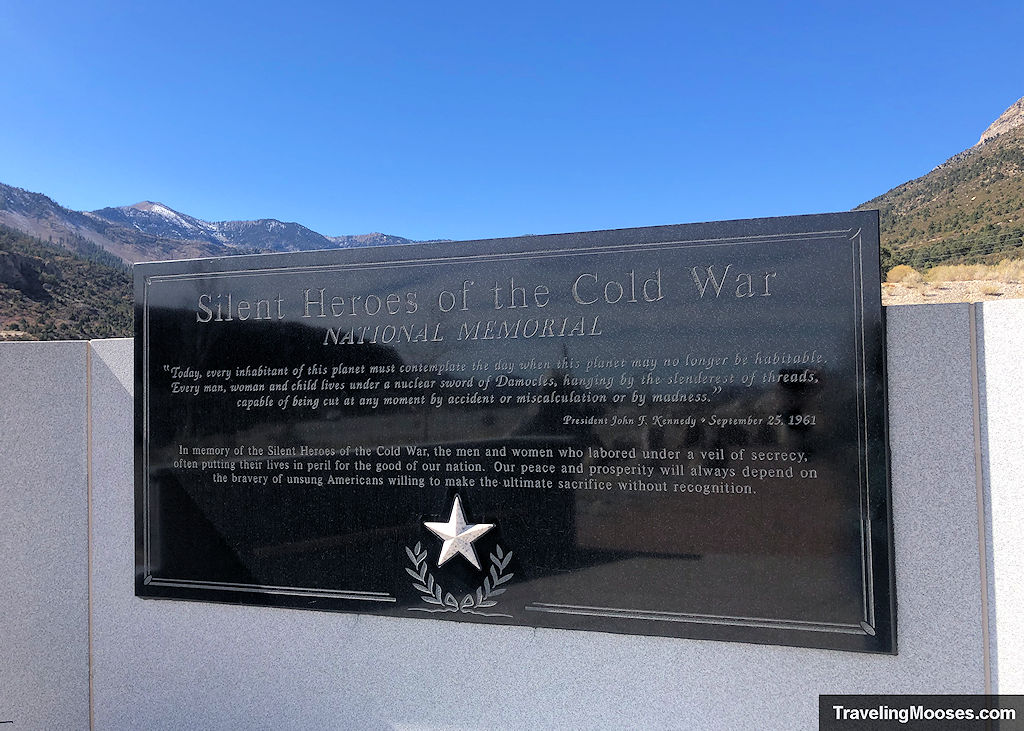
On November 17, 1955 at 6:58 a.m., a Douglas C-54 departed from Lockheed’s air terminal in Burbank, CA. Onboard were 14 individuals, including Air Force personnel, engineers, scientists and CIA officials. Their destination was top-secret “Area 51” where the United States housed one of its most secret Cold War projects – the U-2 reconnaissance aircraft.
Silent Heroes Memorial
The memorial continues to describe how the aircraft encountered an early winter storm and crashed near the peak of Mt. Charleston.
There were no survivors.
The mission was so secret, it took over 4 decades before families of the serviceman were informed of the details.
The memorial also includes the propellor from the plane crash.
There is still wreckage at the original crash site that can be viewable today if you hike up near the top of Mt. Charleston. However, much of it was destroyed as the military blew up the plane to preserve its secrets.
As an alternative to hiking up Mt. Charleston, there is a looking glass on the Packrat trail near the visitor center that shows viewers the area where the wreck occurred.
Seven Stones Plaza
The Seven Stones Plaza is also viewable at the visitor center. It celebrates the seven Southern Pauite Tribes, known as the Nuwuvi, and their long-standing ties to the Spring Mountains.
The plaza consists of a rock formation with 7 stones representing each of the individual tribes and an additional large stone in the center symbolizing Mt. Charleston.
Mt. Charleston is considered to be the birthplace of the Pauite people and the design of the Seven Stones Plaza was created with tribal input.
You can learn more about this sacred monument here.
Packrat Trail
| Round Trip Mileage | 1.4 miles |
| Trail Start | Visitor Center |
| Difficulty | Moderate |
| Average Time | 1 to 1.5 hours |

After seeing the visitor center and outside exhibits, we wanted to try and find the viewing area of the plane crash site on the Packrat Trail.
The trail starts directly in front of the visitor center on the Kunav Huveap trail before turning left to start on the official Pack Rat trail.
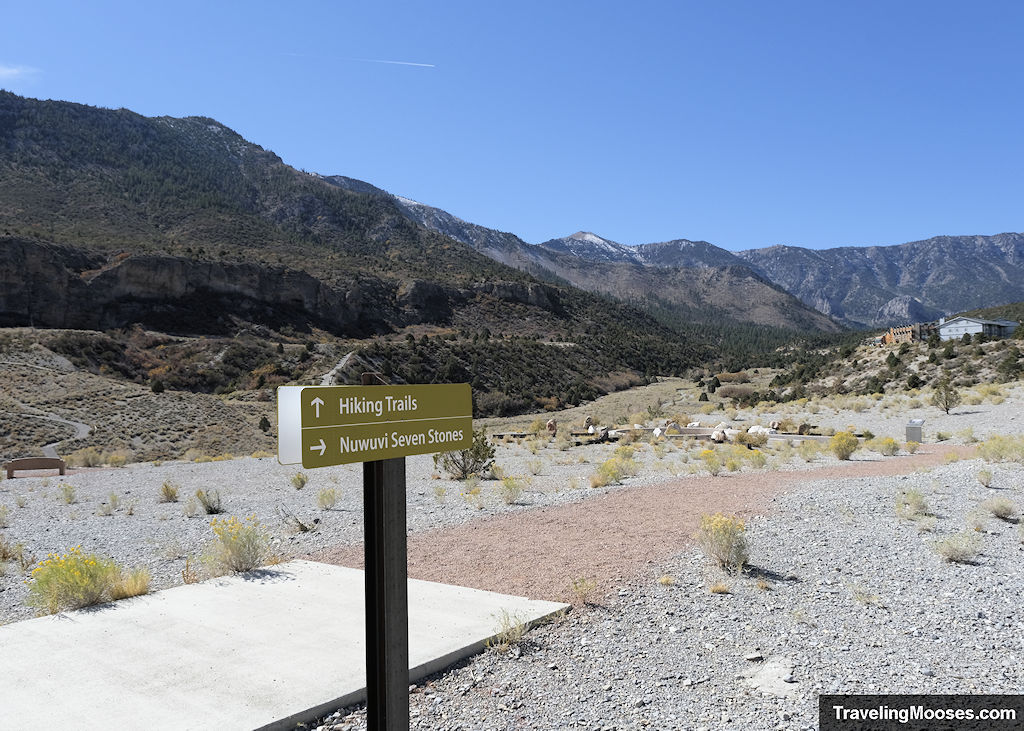
We noticed the first part of the trail was well-marked, but the signs quickly become non-existent. It’s not an area you’re likely to get lost as we could always see the visitor center from the trail, but finding the exhibit was a little harder than we expected.
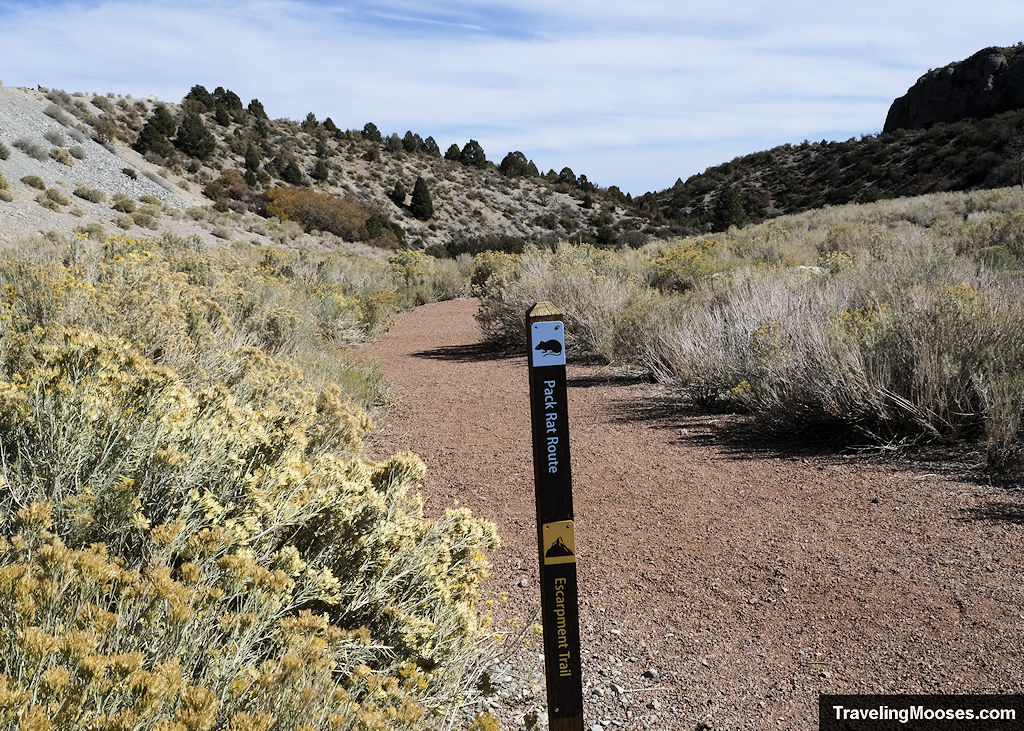
Pro-tip: Before you head off down the Kunav Huveap trail, look off across the valley and picture being able to walk in a straight line. If you could, you’d end up at the exhibit.
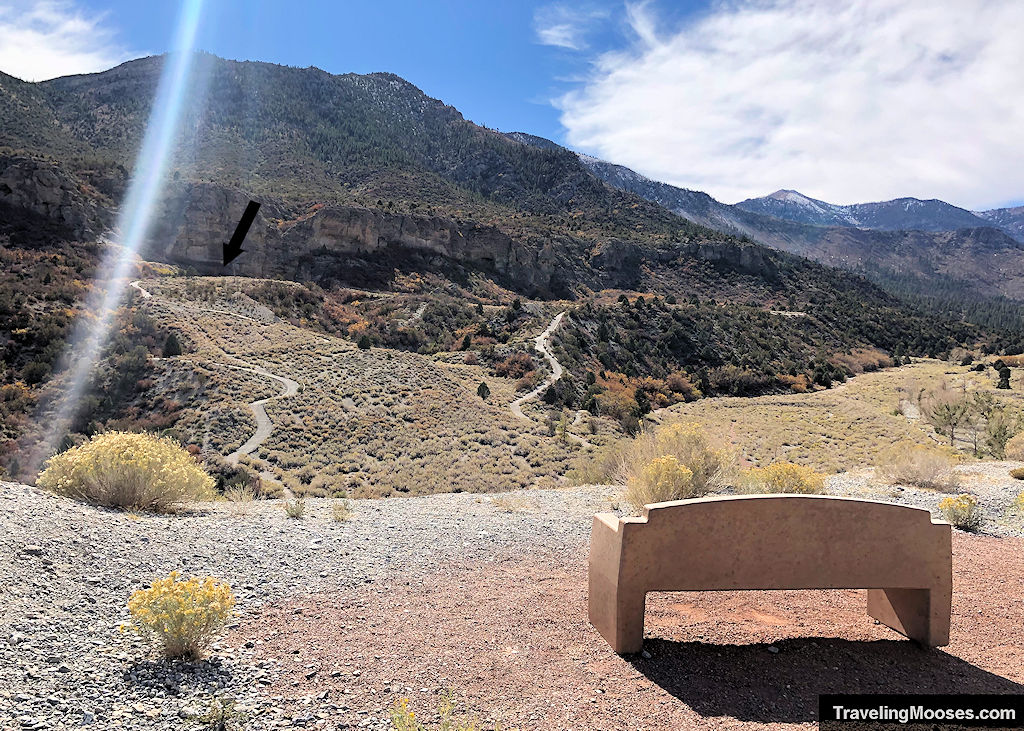
The trail alternates between a paved walk-way and hard packed-gravel. There are plenty of benches along the trail to stop and rest but there was very little shade.
There is some elevation loss and gain over the course of the trail, and we found one of the paved sections of the trail to be pretty steep.
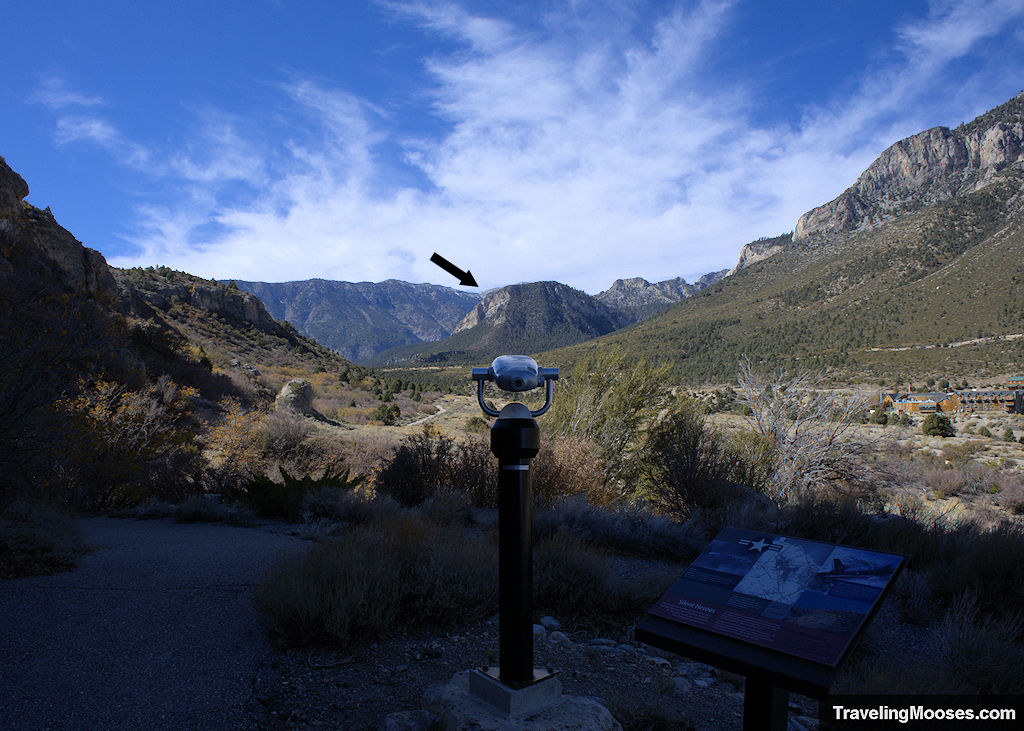
We eventually found the exhibit and the viewing glass to see where the crash occurred. There is a sign explaining exactly where to look on the mountain. We couldn’t see any of the wreckage from the looking glass, but imagined what it would have been like for the rescuers trying to get to the plane in the dead of winter. The remoteness of the area and steep mountain side would have been incredibly difficult to get to.
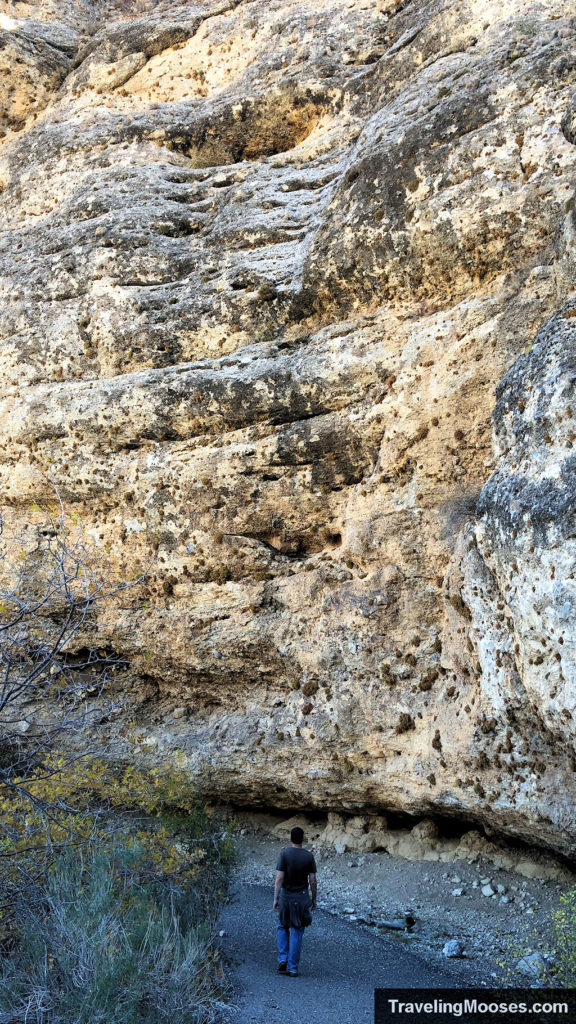
After you’re done with the exhibit, be sure to look around at the canyon walls and keep your eyes open for potential climbers. There are many fixed climbing anchors embedded in the steep walls.
Head back the way you came to the visitor center, or continue to follow the trail around in a circle. Be aware you may end up in a wash like we did to get back to the main trail, as the paths were somewhat confusing on the way back.
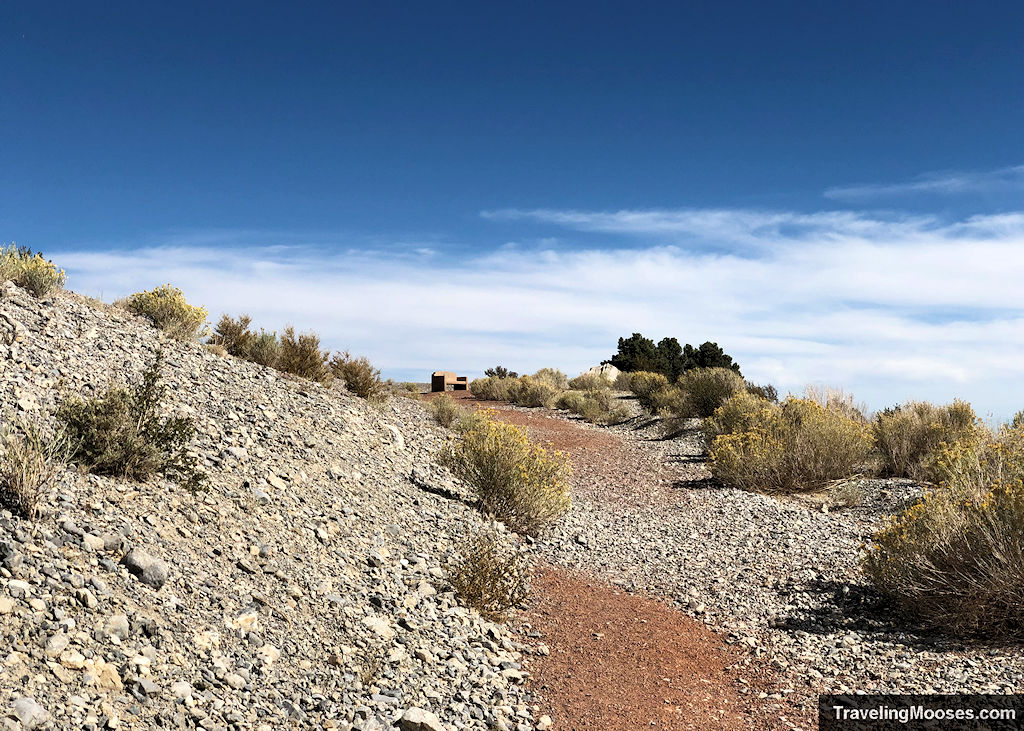
Should you visit the Spring Mountains Visitor Gateway Center?
Rating: 3.0 Mooses

What we liked
- The gift shop was well stocked with local keepsakes and reasonable prices.
- We enjoyed learning about the history of the area, including the Silent Heroes of the Cold War Memorial.
- The scenery in the Mt. Charleston area never disappoints.
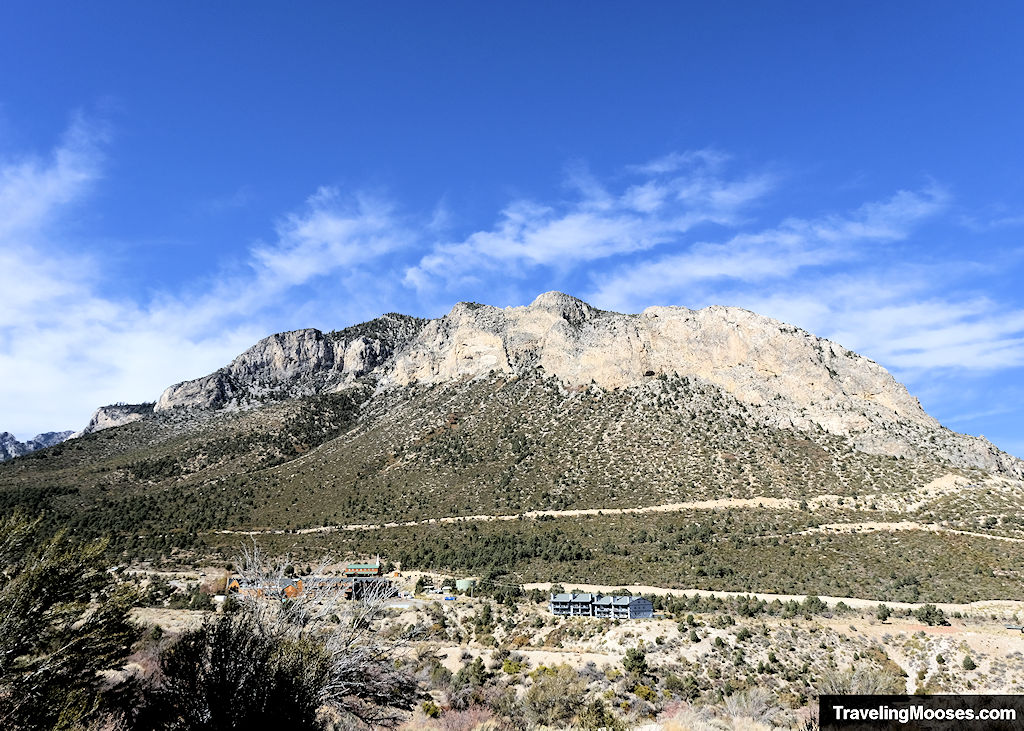
What we didn’t like
- After having visited the Red Rock Visitor Center a few days prior, we were a little disappointed in the size and scope of the indoor exhibits at the Spring Mountain Visitor Gateway center.
- The trails around the visitor center weren’t marked incredibly well. We ended up having to guess which way to go next. Cell service was also incredibly spotty in the area and our favorite Alltrails app didn’t have the Packrat trail listed.
Verdict: It’s a good launch pad to become acquainted with the area, but if you’re short on time, we recommend heading straight to some of the nearby trails such as the Desert View Overlook or Cathedral Rock.
More to do while you’re in the Spring Mountains / Mt. Charleston area:
- Hike one of the numerous trails in the area
- Play a round of disc golf at Lee Canyon
- Go skiing at Lee Canyon in the winter
- Enjoy one of the scenic drives in the area
- Take a ride on the scenic chair lift at the Lee Canyon Resort
- Go mountain biking
- Catch a glimpse of wild horses or burros
- Stay at a local campground in the area
- Visit the Desert View Overlook
You might also like
- Guide: 15 Best things to do around Mt. Charleston
- Hiking: Upper Bristlecone Trail, a magical day of mountains and wild horses
- Hiking: Explore the Cathedral Rock trail
- Nearby: Explore hikes in Red Rock Canyon
- Nearby: Explore the Valley of Fire
- Hiking: Robber’s Roost
- Hiking: Explore slot canyons on the Fletcher Canyon Trail

